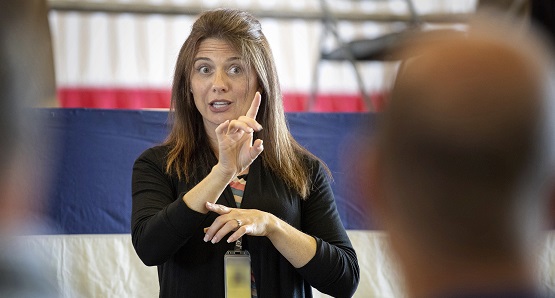A Deaf Translator is a professional who provides spoken, written, and transliteration services in American Sign Language and other forms of visual and tactical communication used by the deaf, hard of hearing. As a deaf person, a deaf translator begins with a separate set of linguistic, cultural, and formative life experiences that allow different understandings.
This experience, combined with professional training, provides the ability for deaf translators to communicate successfully in all types of interpreted interactions, both routine and high-risk. NCIEC research shows that using deaf translator services in many situations allows linguistic and cultural connections that are often impossible when you hear an English translator working alone.

Image Source: Google
Today, deaf translators most often work with auditory translators. Deaf translation teams ensure that spoken language messages reach deaf users in a language or form of communication they can understand and that deaf users' messages are successfully transmitted in spoken language.
The interpreter for the deaf must be combined with an interpreter in the language of the listener. It is becoming more common in the field. Listeners can convert any message to ASL.
CDI's next task is to interpret ASL in visual messages that the deaf can understand. CDI may use mime, props, or other methods for better communication. Depends on the specific conditions of the recipient.
